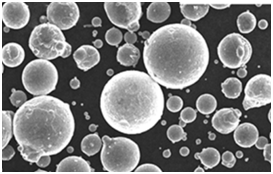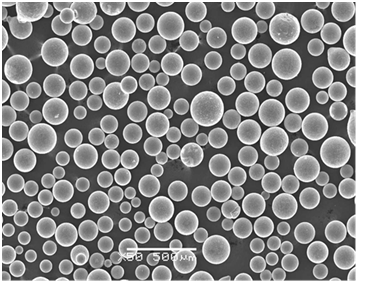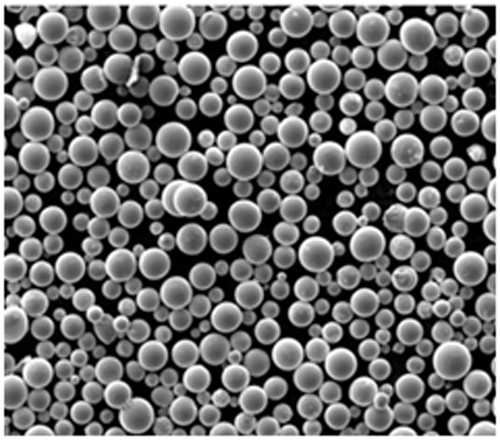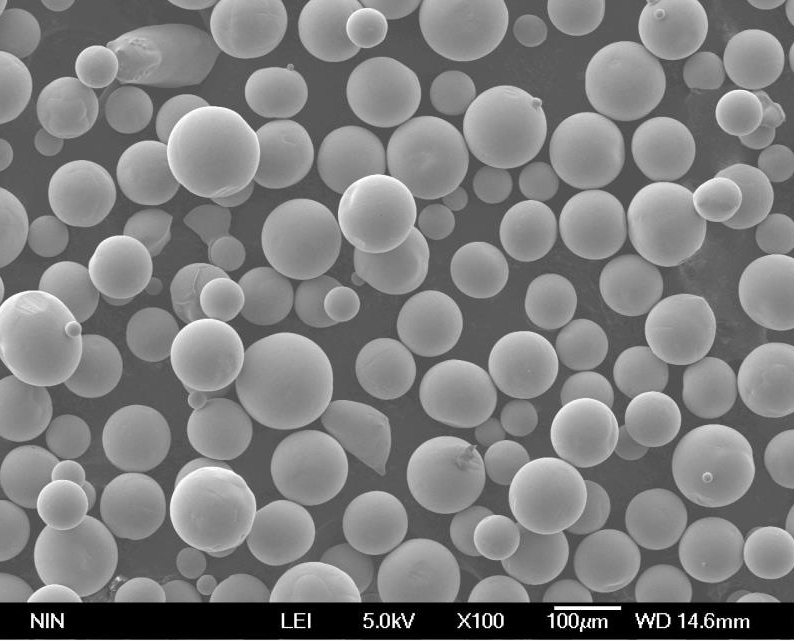Überblick über Schmiedewerkstoff
Schmiedewerkstoffe sind das Rückgrat von Industrien, in denen Langlebigkeit, Festigkeit und Präzision von größter Bedeutung sind. Diese Werkstoffe, die so konstruiert sind, dass sie starkem Druck und hohen Temperaturen standhalten, sind für die Herstellung von Bauteilen, die auch unter Belastung unversehrt bleiben müssen, wie z. B. Automobilteile, Komponenten für die Luft- und Raumfahrt und schwere Maschinen, unerlässlich. Beim Schmieden wird das Metall durch Druckkräfte geformt, oft durch Hämmern oder Pressen. Daher ist die Auswahl des richtigen Materials entscheidend, um die Festigkeit und Leistung des Endprodukts zu gewährleisten.
Bei der Auswahl von Schmiedewerkstoffen müssen die Zusammensetzung, die mechanischen Eigenschaften und die spezifischen Anwendungsanforderungen berücksichtigt werden. Dank der Fortschritte in der Metallurgie stehen heute zahlreiche Metallpulver für das Schmieden zur Verfügung, von denen jedes über einzigartige Eigenschaften verfügt, die für unterschiedliche industrielle Anforderungen geeignet sind.

Arten von Schmiedewerkstoffen
Schmiedewerkstoffe werden nach ihrer Zusammensetzung und ihren Eigenschaften eingeteilt. Zu den am häufigsten verwendeten Materialien gehören Kohlenstoffstähle, legierte Stähle, rostfreie Stähle, Titanlegierungen und Aluminiumlegierungen. Für jede dieser Kategorien gibt es spezifische Sorten, die unterschiedliche Eigenschaften aufweisen, wie z. B. Härte, Zähigkeit, Verschleiß- und Korrosionsbeständigkeit.
| Material Typ | Gemeinsame Noten | Zusammensetzung | Wichtige Eigenschaften | Anwendungen |
|---|---|---|---|---|
| Kohlenstoffstahl | AISI 1045, AISI 1060 | Eisen, Kohlenstoff, Mangan | Hohe Festigkeit, mittlere Zähigkeit, gute Bearbeitbarkeit | Autoteile, Schrauben, Muttern, Zahnräder |
| Legierter Stahl | AISI 4140, AISI 4340 | Eisen, Kohlenstoff, Chrom, Molybdän | Hohe Festigkeit, ausgezeichnete Härtbarkeit, verschleißfest | Kurbelwellen, Zahnräder, Achsen |
| rostfreier Stahl | 304L, 316L | Eisen, Chrom, Nickel, Molybdän | Korrosionsbeständigkeit, gute Duktilität, hohe Festigkeit | Medizinische Geräte, Ausrüstung für die Lebensmittelverarbeitung |
| Titan-Legierungen | Ti-6Al-4V, Ti-10V-2Fe-3Al | Titan, Aluminium, Vanadium | Hohe Festigkeit im Verhältnis zum Gewicht, Korrosionsbeständigkeit | Komponenten für die Luft- und Raumfahrt, medizinische Implantate |
| Aluminium-Legierungen | 2024, 6061 | Aluminium, Kupfer, Magnesium, Silizium | Geringes Gewicht, gute Korrosionsbeständigkeit, hohe Festigkeit | Luftfahrzeugstrukturen, Schiffsausrüstung |
Zusammensetzung des Schmiedewerkstoffs
Die Zusammensetzung von Schmiedewerkstoffen ist je nach Art des Metalls und den gewünschten Eigenschaften des Endprodukts sehr unterschiedlich. Nachstehend finden Sie eine detaillierte Aufschlüsselung der Zusammensetzung einiger der am häufigsten verwendeten Schmiedewerkstoffe.
| Material | Main Elements | Zusätzliche Elemente | Zusammensetzung Details |
|---|---|---|---|
| Kohlenstoffstahl (AISI 1045) | Eisen (98,51-98,98%), Kohlenstoff (0,42-0,50%) | Mangan (0,60-0,90%), Phosphor, Schwefel | Bietet ein gutes Gleichgewicht zwischen Festigkeit, Zähigkeit und Bearbeitbarkeit. |
| Legierter Stahl (AISI 4140) | Eisen (96,79-97,95%), Kohlenstoff (0,38-0,43%) | Chrom (0,80-1,10%), Molybdän (0,15-0,25%) | Es ist bekannt für seine hohe Härtbarkeit und Festigkeit. |
| Rostfreier Stahl (304L) | Eisen (66,0-70,0%), Chrom (18,0-20,0%) | Nickel (8,0-12,0%), Molybdän (<0,75%) | Bietet ausgezeichnete Korrosionsbeständigkeit und gute Duktilität. |
| Titan-Legierung (Ti-6Al-4V) | Titan (88,0-90,0%), Aluminium (5,5-6,75%) | Vanadium (3,5-4,5%) | Äußerst widerstandsfähig mit einem hohen Verhältnis von Festigkeit zu Gewicht, das in der Luft- und Raumfahrt weit verbreitet ist. |
| Aluminium-Legierung (2024) | Aluminium (90,7-94,7%), Kupfer (3,8-4,9%) | Mangan (0,3-0,9%), Magnesium (1,2-1,8%) | Leicht und gut bearbeitbar, wird häufig für Strukturen in der Luft- und Raumfahrt verwendet. |
Merkmale von Schmiedewerkstoff
Die Eigenschaften von Schmiedewerkstoffen hängen stark von ihrer Zusammensetzung und Behandlung ab. Einige gemeinsame Merkmale sind:
- Stärke: Schmiedewerkstoffe sind in der Regel sehr fest und daher ideal für Anwendungen, die eine hohe strukturelle Integrität erfordern.
- Zähigkeit: Diese Materialien können erhebliche Energie absorbieren, bevor sie brechen, was für Bauteile, die starken Stößen ausgesetzt sind, von entscheidender Bedeutung ist.
- Duktilität: Viele Schmiedewerkstoffe sind duktil, d. h. sie können verformt werden, ohne zu brechen, was für den Schmiedeprozess wichtig ist.
- Korrosionsbeständigkeit: Vor allem bei nichtrostenden Stählen und einigen Titanlegierungen ist die Korrosionsbeständigkeit eine Schlüsseleigenschaft, insbesondere in rauer Umgebung.
- Verschleißfestigkeit: Bestimmte legierte Stähle sind besonders verschleißfest und verlängern die Lebensdauer von Teilen wie Zahnrädern und Lagern.






Spezifische Metallpulvermodelle für das Schmieden
Beim Schmieden ist die Wahl des Metallpulvers entscheidend. Hier sind zehn spezifische Metallpulvermodelle, die in der Industrie weit verbreitet sind:
- AISI 1045 Stahlpulver
- Beschreibung: Ein Stahl mit mittlerem Kohlenstoffgehalt, der sich gut bearbeiten und schweißen lässt. Er wird häufig für Teile verwendet, die Festigkeit und Verschleißfestigkeit erfordern.
- Anwendungen: Ideal für Automobilteile, Maschinenteile und Zahnräder.
- AISI 1060 Stahlpulver
- Beschreibung: Ein Stahl mit hohem Kohlenstoffgehalt, der für seine Härte und seine Fähigkeit, eine scharfe Kante zu halten, bekannt ist. Er wird häufig für Anwendungen verwendet, die eine Kombination aus Stärke und Zähigkeit erfordern.
- Anwendungen: Für die Herstellung von Messern, Klingen und hochfesten Werkzeugen.
- AISI 4140 Legierter Stahl Pulver
- Beschreibung: Ein Chrom-Molybdän-legierter Stahl, der für seine hervorragende Härtbarkeit und Festigkeit bekannt ist. Er wird häufig in stark beanspruchten Umgebungen eingesetzt.
- Anwendungen: Ideal für Kurbelwellen, Zahnräder und Schwerlastachsen.
- AISI 4340 Legierter Stahl Pulver
- Beschreibung: Ein Stahl mit Nickel-Chrom-Molybdän-Legierung, der eine gute Balance zwischen Festigkeit, Zähigkeit und Verschleißfestigkeit bietet.
- Anwendungen: Häufig verwendet in Komponenten für die Luft- und Raumfahrt und in Teilen von Schwermaschinen.
- 304L-Edelstahl-Pulver
- Beschreibung: Ein austenitischer rostfreier Stahl mit niedrigem Kohlenstoffgehalt, der sich durch hervorragende Korrosionsbeständigkeit und gute Schweißbarkeit auszeichnet.
- Anwendungen: Wird in medizinischen Geräten, in der Lebensmittelverarbeitung und in der Schifffahrt eingesetzt.
- 316L-Edelstahl-Pulver
- Beschreibung: Bekannt für seine überragende Korrosionsbeständigkeit, insbesondere gegen Chloride, wodurch es sich für den Einsatz in der Schifffahrt und in der chemischen Industrie eignet.
- Anwendungen: Wird in chemischen Anlagen, Schiffsausrüstung und chirurgischen Implantaten verwendet.
- Ti-6Al-4V Titanlegierungspulver
- Beschreibung: Eine weit verbreitete Titanlegierung, die für ihre hohe Festigkeit, ihr geringes Gewicht und ihre hervorragende Korrosionsbeständigkeit bekannt ist.
- Anwendungen: Weit verbreitet in Bauteilen für die Luft- und Raumfahrt, medizinischen Implantaten und Hochleistungsteilen für die Automobilindustrie.
- Ti-10V-2Fe-3Al Pulver aus einer Titanlegierung
- Beschreibung: Bietet eine einzigartige Kombination aus hoher Festigkeit, Zähigkeit und Verarbeitbarkeit und ist damit ideal für komplexe Schmiedeanwendungen.
- Anwendungen: Wird für Komponenten in der Luft- und Raumfahrt sowie für strukturelle Anwendungen verwendet, bei denen eine Gewichtsreduzierung entscheidend ist.
- 2024 Aluminium-Legierung Pulver
- Beschreibung: Diese Aluminiumlegierung ist für ihr gutes Verhältnis von Festigkeit zu Gewicht bekannt und wird in der Luft- und Raumfahrtindustrie gerne verwendet.
- Anwendungen: Wird in Flugzeugstrukturen, Automobilteilen und Hochleistungssportgeräten verwendet.
- 6061 Aluminium-Legierung Pulver
- Beschreibung: Eine vielseitige Aluminiumlegierung, die für ihre guten mechanischen Eigenschaften und ihre Korrosionsbeständigkeit bekannt ist.
- Anwendungen: Wird häufig für strukturelle Anwendungen, Schiffsausrüstung und Automobilteile verwendet.
Anwendungen von Schmiedewerkstoffen
Schmiedewerkstoffe werden aufgrund ihrer hervorragenden mechanischen Eigenschaften in einer Vielzahl von Branchen eingesetzt. In der nachstehenden Tabelle sind einige der wichtigsten Anwendungen dieser Werkstoffe aufgeführt.
| Industrie | Anwendungen | Bevorzugte Materialien |
|---|---|---|
| Automobilindustrie | Motorkomponenten, Getriebe, Kurbelwellen | AISI 4140, 4340 Legierter Stahl, 6061 Aluminiumlegierung |
| Luft- und Raumfahrt | Fahrwerk, Turbinenschaufeln, Strukturteile | Ti-6Al-4V, Ti-10V-2Fe-3Al, 2024 Aluminiumlegierung |
| Medizinische | Chirurgische Instrumente, Implantate | 304L Edelstahl, Ti-6Al-4V |
| Öl & Gas | Ventile, Flansche, Armaturen | edelstahl 316L, legierter Stahl AISI 4340 |
| Bauwesen | Strukturelle Balken, Befestigungselemente | AISI 1045-Stahl, 6061-Aluminiumlegierung |
Spezifikationen, Größen, Güteklassen und Normen
Beim Schmieden können die spezifischen Anforderungen an Materialeigenschaften, Größen und Normen je nach Anwendung stark variieren. Im Folgenden finden Sie einen umfassenden Überblick über die Spezifikationen, Größen und Qualitäten verschiedener Schmiedematerialien sowie über die einschlägigen Industrienormen.
Spezifikationen für Schmiedematerial
Die Spezifikationen von Schmiedematerialien werden durch mehrere Schlüsselmerkmale definiert, darunter mechanische Eigenschaften, Abmessungen und die Einhaltung von Industrienormen.
| Material Typ | Standard | Mechanische Eigenschaften | Typische Größen | Klassen |
|---|---|---|---|---|
| Kohlenstoffstahl | ASTM A105 | Streckgrenze: 250 MPa, Zugfestigkeit: 450 MPa | Stangen: 10mm – 100mm Durchmesser, Platten: Bis zu 1000 mm dick | AISI 1045, AISI 1060 |
| Legierter Stahl | ASTM A322 | Streckgrenze: 550 MPa, Zugfestigkeit: 750 MPa | Stangen: 20mm – 200mm Durchmesser, Platten: Bis zu 1500mm dick | AISI 4140, AISI 4340 |
| rostfreier Stahl | ASTM A276 | Streckgrenze: 210 MPa, Zugfestigkeit: 520 MPa | Stangen: 10mm – 150mm Durchmesser, Platten: Bis zu 1000mm dick | 304L, 316L |
| Titanium Alloy | ASTM B265 | Streckgrenze: 880 MPa, Zugfestigkeit: 950 MPa | Stangen: 6mm – 50mm Durchmesser, Platten: Bis zu 50 mm dick | Ti-6Al-4V, Ti-10V-2Fe-3Al |
| Aluminium-Legierung | ASTM B211 | Streckgrenze: 310 MPa, Zugfestigkeit: 470 MPa | Stangen: 10mm – 150mm Durchmesser, Platten: Bis zu 1000mm dick | 2024, 6061 |
Anwendungen und Anwendungsfälle
Je nach ihren mechanischen Eigenschaften und spezifischen Anforderungen werden verschiedene Schmiedewerkstoffe für unterschiedliche Anwendungen eingesetzt.
| Material | Anmeldung | Vorteile | Beschränkungen |
|---|---|---|---|
| AISI 1045 Kohlenstoffstahl | Automobilteile, Maschinenteile | Gutes Gleichgewicht zwischen Festigkeit und Bearbeitbarkeit | Begrenzte Korrosionsbeständigkeit |
| AISI 4140 Legierter Stahl | Kurbelwellen, hochbelastbare Achsen | Hohe Festigkeit und Verschleißfestigkeit | Erfordert Wärmebehandlung für optimale Leistung |
| 304L-Edelstahl | Medizinische Geräte, Lebensmittelverarbeitung | Ausgezeichnete Korrosionsbeständigkeit, gute Schweißbarkeit | Geringere Festigkeit im Vergleich zu einigen Legierungen |
| Ti-6Al-4V Titan-Legierung | Komponenten für die Luft- und Raumfahrt, medizinische Implantate | Hohes Festigkeits-Gewichts-Verhältnis, hervorragende Korrosionsbeständigkeit | Hohe Kosten, schwierig zu bearbeiten |
| 6061 Aluminium-Legierung | Luftfahrzeugstrukturen, Schiffsausrüstung | Leichtes Gewicht, gute Korrosionsbeständigkeit, vielseitig einsetzbar | Geringere Festigkeit im Vergleich zu anderen Legierungen |
Lieferanten und Preisangaben
Die Kosten und die Verfügbarkeit von Schmiedewerkstoffen können je nach Lieferant, Auftragsvolumen und Marktbedingungen erheblich variieren. Im Folgenden finden Sie einige typische Lieferanten und Preisangaben für Schmiedematerialien:
| Material | Anbieter | Preisspanne (pro kg) | Anbieter Details |
|---|---|---|---|
| AISI 1045 Kohlenstoffstahl | Metall-Supermärkte | $1.50 – $2.00 | Bietet eine breite Palette von Stahlprodukten an, darunter Stabstahl und Bleche. |
| AISI 4140 Legierter Stahl | Online-Metalle | $3.00 – $4.50 | Spezialisiert auf verschiedene legierte Stähle für industrielle Anwendungen. |
| 304L-Edelstahl | Rostfreie Versorgung | $5.00 – $7.00 | Bietet rostfreien Stahl in verschiedenen Formen an, darunter Stabstahl und Bleche. |
| Ti-6Al-4V Titan-Legierung | Titanium Industries Inc. | $20.00 – $30.00 | Bekannt für hochwertige Titanprodukte für die Luft- und Raumfahrt sowie für medizinische Anwendungen. |
| 6061 Aluminium-Legierung | Aluminium-Vertriebsgesellschaft Inc. | $2.50 – $4.00 | Liefert eine Reihe von Aluminiumlegierungen für verschiedene Anwendungen. |
Vergleich der Vor- und Nachteile von Schmiedematerialien
Die Kenntnis der Vorteile und Grenzen der einzelnen Schmiedematerialien hilft bei der Auswahl der am besten geeigneten Option für eine bestimmte Anwendung. Hier ist ein vergleichender Blick auf einige der beliebtesten Materialien:
| Material | Vorteile | Benachteiligungen |
|---|---|---|
| AISI 1045 Kohlenstoffstahl | Stark, kostengünstig, gut bearbeitbar | Schlechte Korrosionsbeständigkeit |
| AISI 4140 Legierter Stahl | Hohe Festigkeit, gute Verschleißfestigkeit | Teuer, erfordert Wärmebehandlung |
| 304L-Edelstahl | Ausgezeichnete Korrosionsbeständigkeit, schweißbar | Geringere Festigkeit im Vergleich zu einigen Legierungen |
| Ti-6Al-4V Titan-Legierung | Sehr hohes Festigkeits-Gewichts-Verhältnis, korrosionsbeständig | Hohe Kosten, schwierig zu bearbeiten |
| 6061 Aluminium-Legierung | Leichtes Gewicht, gute Korrosionsbeständigkeit | Geringere Festigkeit im Vergleich zu anderen Legierungen |

FAQ
F1: Welche Faktoren sollten bei der Auswahl eines Schmiedewerkstoffs berücksichtigt werden?
Bei der Auswahl eines Schmiedewerkstoffs sind Faktoren wie Festigkeit, Zähigkeit, Duktilität, Korrosionsbeständigkeit und die spezifischen Anforderungen der Anwendung zu berücksichtigen. Die Umgebung, in der das Material verwendet wird, und die Art der Beanspruchung sind ebenfalls entscheidend.
F2: Wie wirkt sich das Schmieden auf die Eigenschaften des Werkstoffs aus?
Durch das Schmieden wird das Korngefüge des Werkstoffs verbessert, was zu besseren mechanischen Eigenschaften wie Festigkeit und Zähigkeit führt. Das Verfahren kann auch die Beständigkeit des Materials gegen Ermüdung und Stöße verbessern.
F3: Was ist der Unterschied zwischen Kohlenstoffstahl und legiertem Stahl beim Schmieden?
Kohlenstoffstahl enthält in erster Linie Eisen und Kohlenstoff und keine zusätzlichen Legierungselemente. Legierter Stahl enthält Elemente wie Chrom, Molybdän und Vanadium, die bestimmte Eigenschaften wie Härtbarkeit, Festigkeit und Verschleißfestigkeit verbessern.
F4: Warum ist eine Titanlegierung im Vergleich zu anderen Schmiedematerialien teurer?
Titanlegierungen sind aufgrund der hohen Kosten für Rohtitan und der komplexen Verarbeitung, die zur Herstellung dieser Legierungen erforderlich ist, teurer. Ihr hervorragendes Verhältnis von Festigkeit zu Gewicht und ihre Korrosionsbeständigkeit machen sie jedoch für Hochleistungsanwendungen wertvoll.
F5: Können Aluminiumlegierungen in hochbelasteten Anwendungen eingesetzt werden?
Aluminiumlegierungen wie 2024 und 6061 sind zwar stabil und leicht, werden aber im Vergleich zu Stählen und Titanlegierungen in der Regel für weniger anspruchsvolle Anwendungen eingesetzt. Sie eignen sich für Anwendungen in der Luft- und Raumfahrt sowie in der Automobilindustrie, wo eine Gewichtsreduzierung entscheidend ist.

